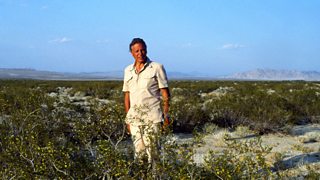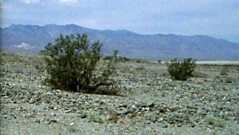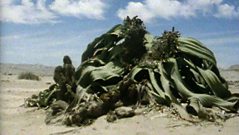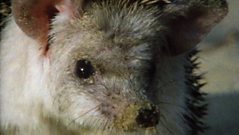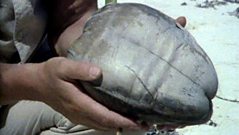
Ships of the desert
Camels are adapted for life in deserts yet depend on the Tuareg for water.
Sandy deserts are incredibly inhospitable yet the Tuareg manage to cross the Sahara carrying great cakes of salt that they trade for cloth, grain, and dates. But they would not be able to make these journeys without camels. The camels carry on their backs all the food for both people and camels, while water is carried in skins that hang below the camels, in their shade. Camels are very well adapted to the desert. They only have two toes but these are connected by skin so they do not sink deeply into the sand. Its nostrils can be closed to keep out sand in storms. It only has hair on the top of its body to protect it from the sun, while the rest of its body is virtually naked to keep it cool. Its hump is full of fat which can be converted into water in emergencies, but this is a wasteful process so only done when the camel has not drunk for a very long time. A camel can survive without water for 4 times longer than a donkey and 10 times longer than a man. When the Tuareg dig down and find a spring, the camels can drink a huge amount. So without camels the Tuareg could not travel across the desert, but without the Tuareg digging wells for them the camels could not make the journey alone. Spring water is the key that unlocks abundant fertility in the desert. At oases in the Sahara, all kinds of crops can be produced from the sand if watered. Dates, vegetables, and fruit grow, while birds and insects thrive. But oases are under constant threat. If the wind changes direction, nothing can stop the encroaching sand.
Duration:
This clip is from
Featured in...
![]()
African wildlife—±«Óãtv Wildlife Finder
Discover more about Africa’s most surprising and also best-loved wildlife.
![]()
±«Óãtv Nature
Be captivated, informed and inspired by the world's wildlife.
More clips from The Baking Deserts
-
![]()
Snare of silk
Duration: 01:48
-
![]()
Furnace flora
Duration: 03:46
-
![]()
Desert survivor
Duration: 02:25
-
![]()
Big ears
Duration: 01:13
More clips from The Living Planet
-
![]()
Ocean Drifters—Worlds Apart
Duration: 01:20
-
![]()
Snare of silk—The Baking Deserts
Duration: 01:48
-
![]()
Furnace flora—The Baking Deserts
Duration: 03:46
-
![]()
Desert survivor—The Baking Deserts
Duration: 02:25
